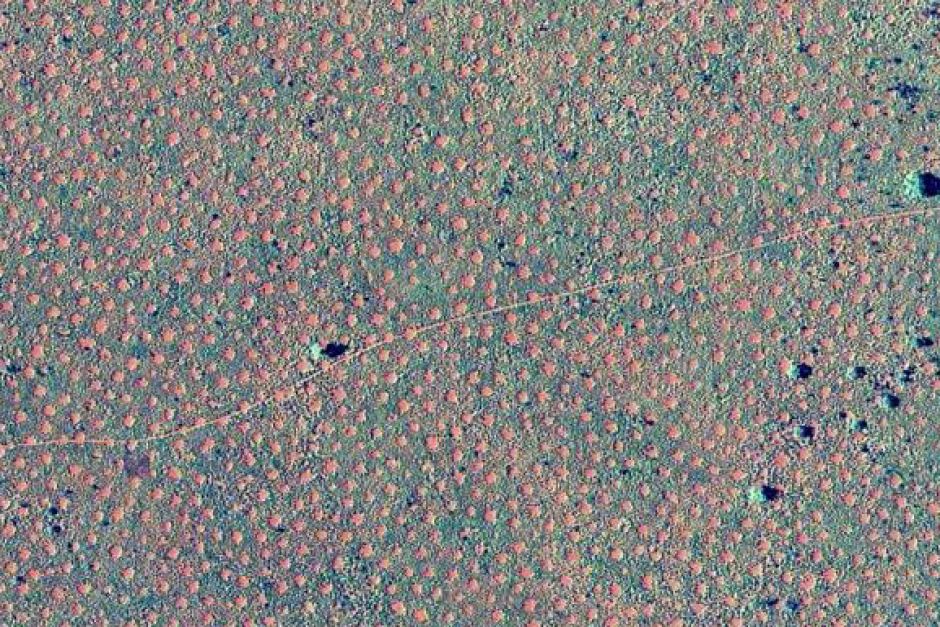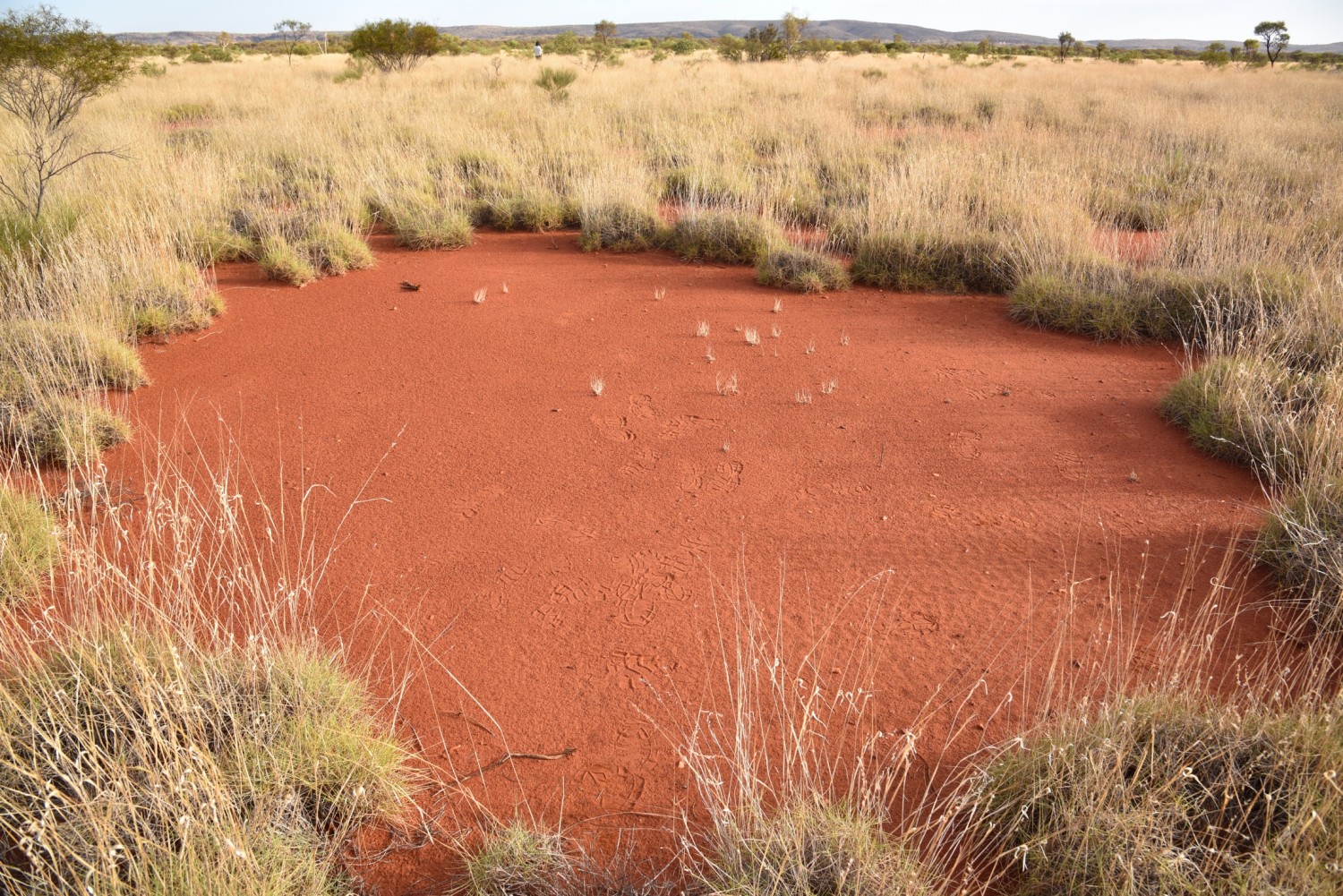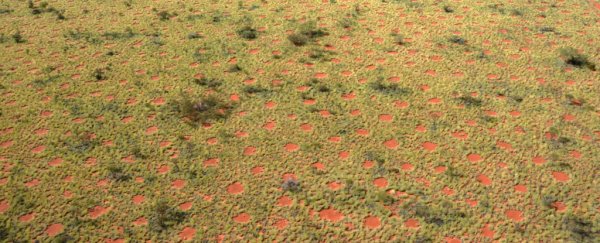Mysterious circular patches of dry, barren land have been spotted scattered across the Australian outback. Known as 'fairy circles', these round patterns had previously only been seen in the dry grasslands of Namibia, and were thought to be the only example anywhere in the world.
But an aerial image of the Australian outbreak has revealed that the circles appear there too, and their distribution provides further insight into how the structures form - which, despite appearances, that has more to do with water than aliens.
Fairy circles are incredibly rare, but they've been spotted in the grasslands of Namibia in southwest Africa for years. Ranging in diameter anywhere from 2 to 15 metres (7 to 50 feet), these dry patches of land form mysteriously in the middle of an otherwise uniform sea of grass.
It was generally assumed that this was the only place the patterns occurred, but recently a photo was sent to Stephan Getzin, an ecologist with the Helmholtz Centre for Environmental Research in Germany, of what looked a lot like fairy circles near Newman in Western Australia.
"I was really astonished," Getzin told The New York Times. "I couldn't believe what I was seeing."
 Bronwyn Bell
Bronwyn Bell
The circles were already well-known to the locals, but they can only be properly seen from the air, and no one had taken the time to study them properly until recently. With further research, Getzin was able to demonstrate that the structures in Australia are the same as the mysterious patterns in Namibia, despite being located more than 10,000 kilometres away.
So what causes these circles? One of the leading hypotheses suggests that fairy circles are caused by carbon monoxide rising up from the earth. Another idea is that termites or ants could be nibbling away at plant roots in the circular pattern.
But Getzin came up with a third hypothesis back in 2014, proposing that fairy circles form naturally as plants organise themselves to get the most amount of water available - and this new discovery supports that idea.
"The interesting thing about fairy circles is that they are spread with great regularity and homogeneity, even over vast areas, but they occur only within a narrow rainfall belt," said Getzin.
To find out more, Getzin and his team measured the water drainage and surface temperature of the Australian fairy circles, then ran computer simulations to show that the barren patches of desert allow water to permeate further, which means the same amount of liquid can support the most plants possible.
The specifics of the Australian and Namibian structures vary slightly, but they both have this same benefit.
"In Namibia, the sandy soils of the fairy circles are much more permeable and precipitation can drain away with ease," said Getzin. "The details of this mechanism are different to that in Australia. But it produces the same vegetation pattern because both systems of gaps are triggered by the same instability."
 Stephan Getzin
Stephan Getzin
The discovery also satisfies one of the main criticisms of Getzin's work on fairy circles - if the structures naturally form due to water shortages, why don't we see them more often? It's now becoming apparent that they're not as rare as we once thought.
What's most exciting is that the research suggests there could be other fairy circles around the world that we're yet to find - and in today's world of google maps and satellite images, it's nice to know there's still a little mystery left on the planet.
"Discoveries like the Australian fairy circles are extremely rare, which makes the current study tremendously exciting," Getzin told ABC Science.
The results have been published in the Proceedings of the National Academy of Sciences.
